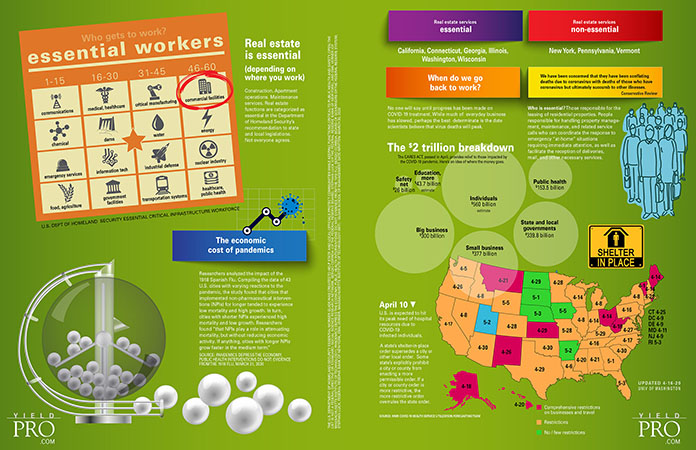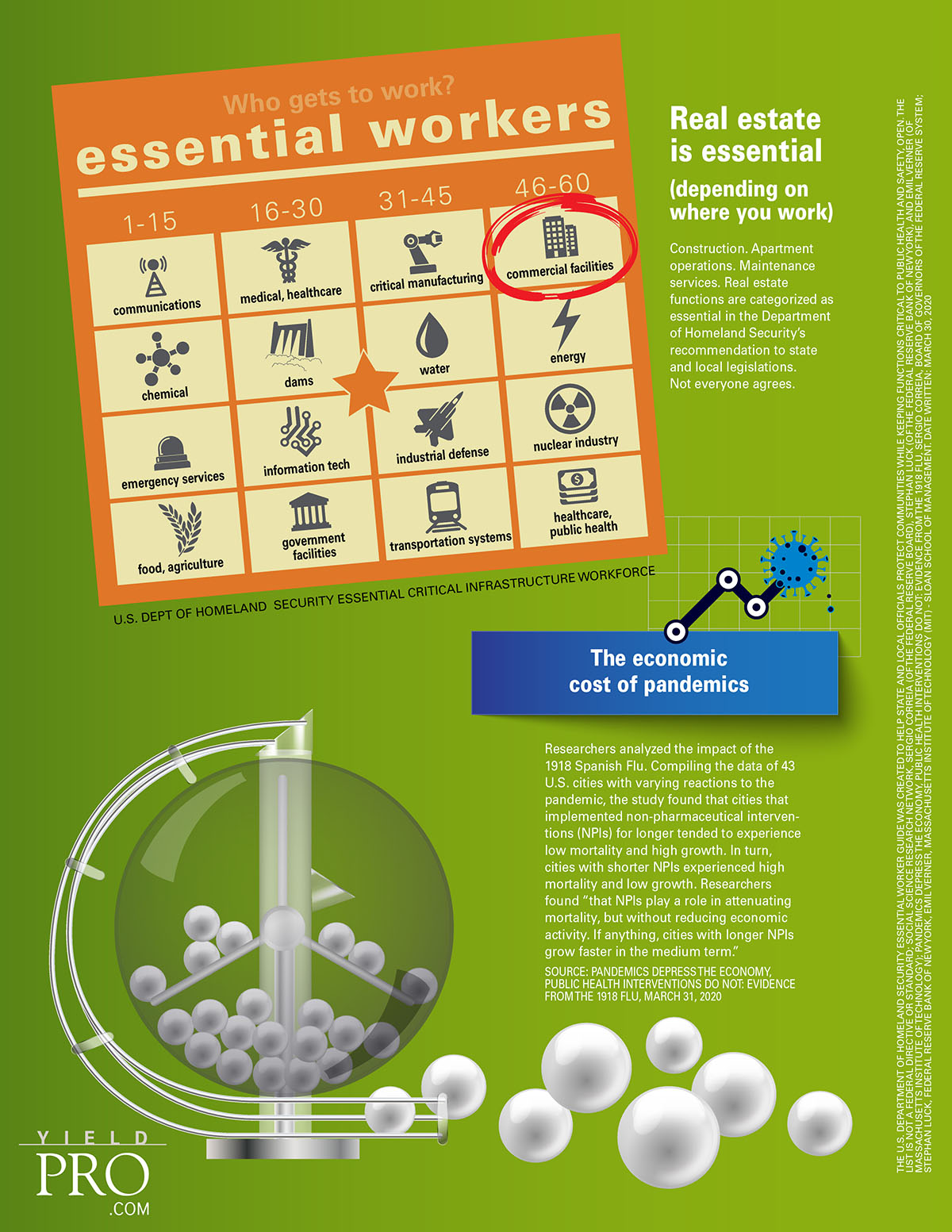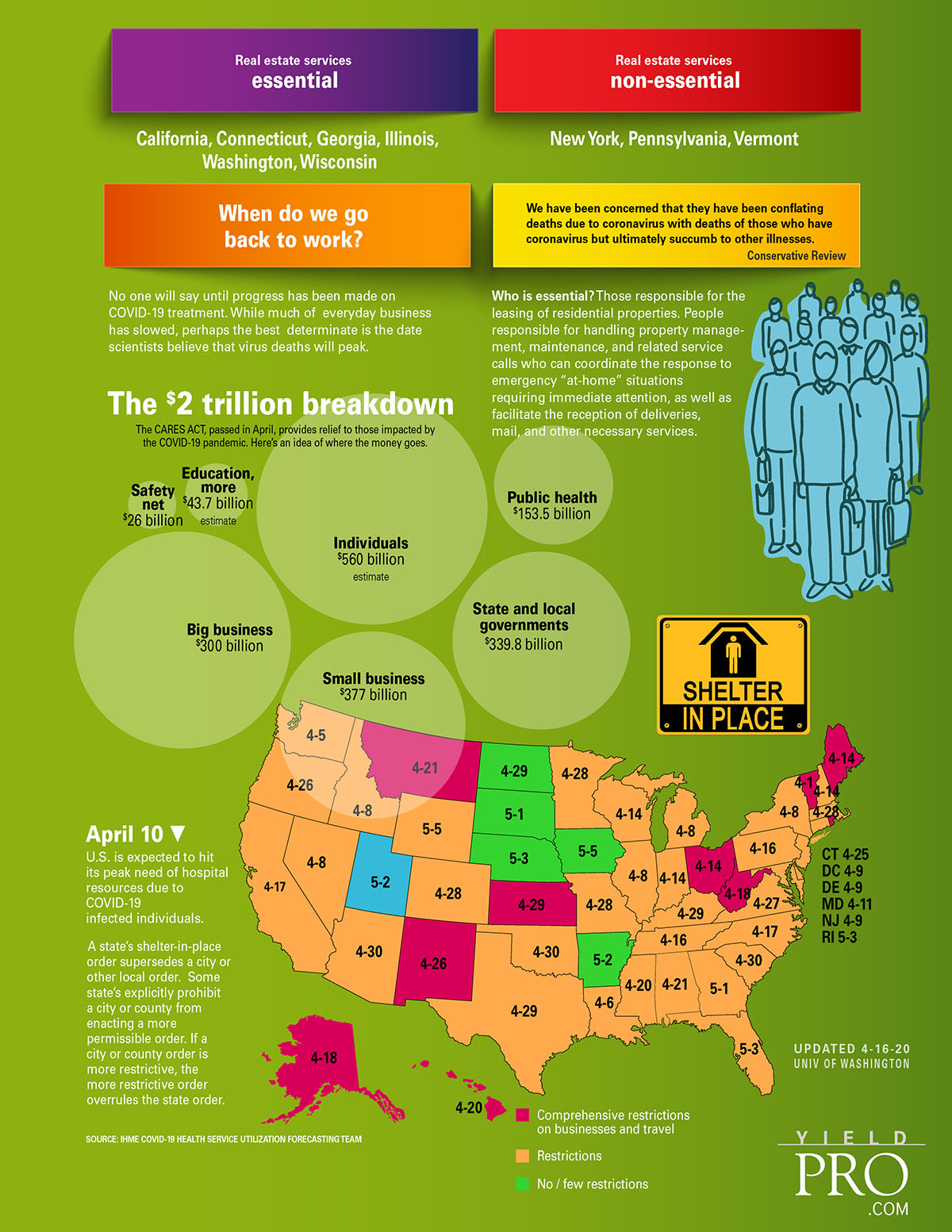Updated: April 16, 2020
Who gets to work?
essential workers
Real estate is essential (depending on where you work)
Construction. Apartment operations. Maintenance services. Real estate functions are categorized as essential in the Department of Homeland Security’s recommendation to state and local legislations. Not everyone agrees.
The economic cost of pandemics
Researchers analyzed the impact of the 1918 Spanish Flu. Compiling the data of 43 U.S. cities with varying reactions to the pandemic, the study found that cities that implemented non-pharmaceutical interventions (NPIs) for longer tended to experience low mortality and high growth. In turn, cities with shorter NPIs experienced high mortality and low growth. Researchers found “that NPIs play a role in attenuating mortality, but without reducing economic activity. If anything, cities with longer NPIs grow faster in the medium term.”
Real estate services essential
California, Connecticut, Georgia, Illinois, Washington, Wisconsin
Real estate services non-essential
New York, Pennsylvania, Vermont
When do we go back to work?
No one will say until progress has been made on COVID-19 treatment. While much of everyday business has slowed, perhaps the best determinate is the date scientists believe that virus deaths will peak.
40% New York landlords expect nearly half of renters NOT to pay April 1 rent
Who is essential? Those responsible for the leasing of residential properties. People responsible for handling property management, maintenance, and related service calls who can coordinate the response to emergency “at-home” situations requiring immediate attention, as well as facilitate the reception of deliveries, mail, and other necessary services.
The $2 trillion breakdown
The CARES ACT, passed in April, provides relief to those impacted by the COVID-19 pandemic. Here’s an idea of where the money goes.
- Individuals $560 billion estimate
- Small business $377 billion
- State and local governments $339.8 billion
- Big business $300 billion
- Public health $153.5 billion
- Education, more $43.7 billion estimate
- Safety net $26 billion
April 15
U.S. is expected to hit its peak need of hospital resources due to COVID-19 infected individuals.
A state’s shelter-in-place order supersedes a city or other local order. Some state’s explicitly prohibit a city or county from enacting a more permissible order. If a city or county order is more restrictive, the more restrictive order overrules the state order.

















